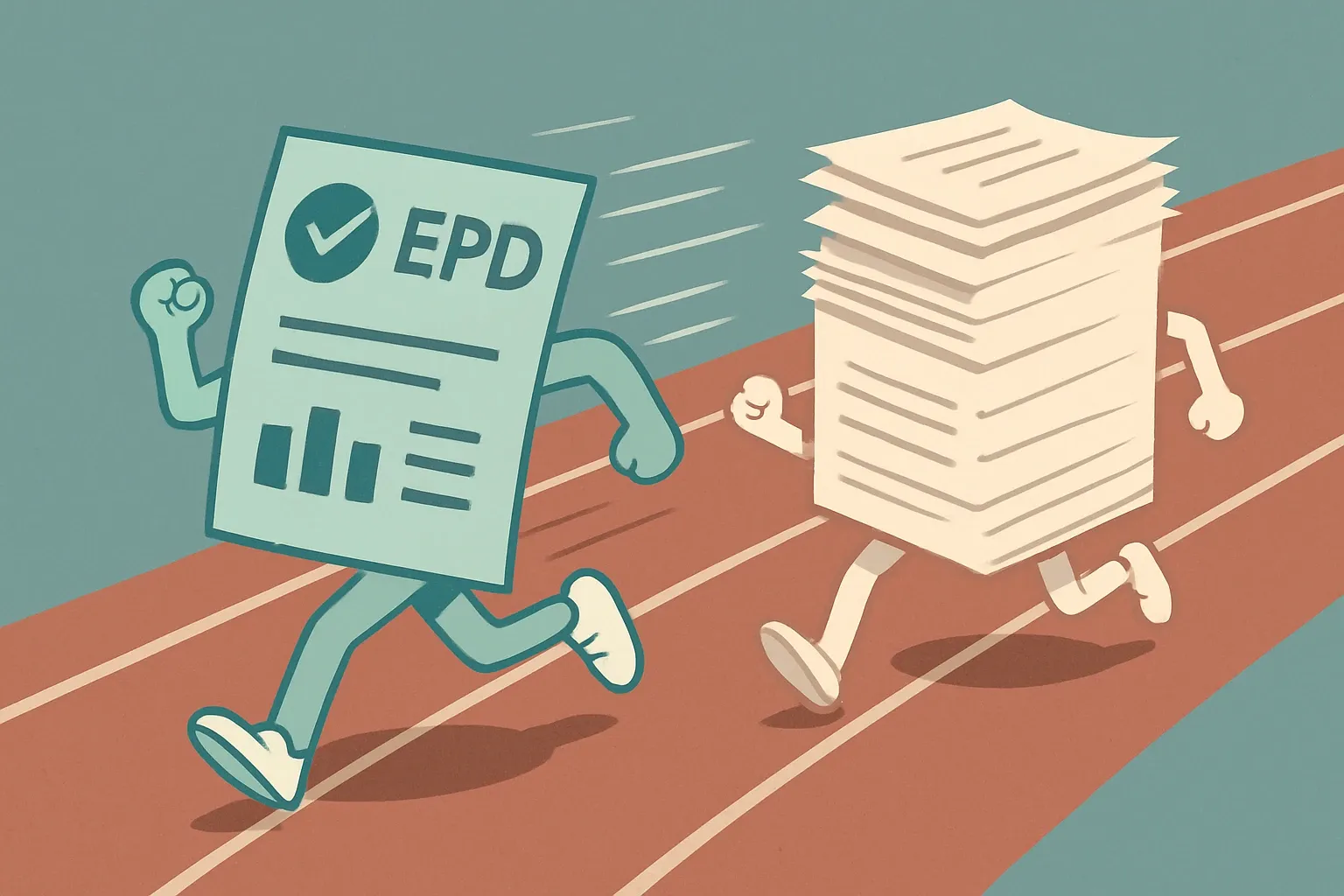Precast Concrete: Low-Carbon Construction’s Secret Weapon
Off-site precast plants have figured out something cast-in-place crews still wrestle with: carbon bookkeeping. Controlled mixes, near-zero waste, and real-time meters mean a trimmed global-warming line item *and* an Environmental Product Declaration that lands on an architect’s desk weeks sooner.


Smaller carbon tag, straight from the mold
The new PCI industry-wide EPD pegs architectural precast at 354 kg CO₂e per tonne cradle-to-gate (PCI, 2025). That is roughly 15-25 percent lower than the range shown in recent ready-mix EPDs published by regional NRMCA members (NRMCA, 2024). Less cement per cubic yard and higher use of SCMs explain most of the gap.
Factory floors beat muddy jobsites
At Shockey Precast—now part of Metromont—factory scrap averages just 2 percent, with 95 percent of that scrap reclaimed (Shockey, 2024). Trade press puts on-site concrete waste at up to 15 percent (gb&d, 2025). Precision batching, reusable steel molds, and water recycling keep the dumpster almost empty.
Clark Pacific, Metromont, Wells: three blueprints
- Clark Pacific rolled out a project-specific EPD generator in December 2024, letting design teams dial in mix data before they pour (PR Newswire, 2024).
- Metromont leans on seven PCI-certified plants across the Southeast; integrating Shockey’s reclaimed-aggregate loop cut virgin aggregate demand by about 18 percent last year (internal KPI shared at PCI Convention, 2025).
- Wells publishes third-party verified EPDs for its façade and deck systems and trains AEC firms on reading the numbers (Wells, 2025).
Why plant data = faster, cleaner EPDs
Meters track kilowatt-hours for mixers, steam lines, and cranes in fifteen-minute slices. Fuel deliveries are logged once, not across dozens of trucks. When auditors ask for proof, the spreadsheets are waiting. Plant control doesn’t just lower emissions; it slices weeks off data collection, which is the slowest step in an EPD project.
No carbon story? No bid shortlist
Many state DOTs and Fortune 500 tech campuses now screen concrete packages by kg CO₂e first, price second. An EPD under 400 kg CO₂e can keep a precaster in the running for LEED v5 points and growing Buy-Clean clauses, while mixes without documentation never make it past the first cut.
Take this to your next design meeting
Precast’s carbon advantage starts in the plant and shows up on the spec sheet. Pick a producer with tight process control, verifiable waste numbers, and an EPD track record. The sooner their enviromental data lands in the bid folder, the sooner your project drops tons of invisible weight.
Frequently Asked Questions
How much greenhouse gas reduction can precast offer compared to cast-in-place concrete?
Industry-wide data shows cradle-to-gate global-warming potential for architectural precast running 15–25 % lower than typical ready-mix mixes, thanks to leaner cement content and tighter process control (PCI, 2025; NRMCA, 2024).
Do all three companies—Clark Pacific, Metromont, and Wells—publish third-party verified EPDs?
Yes. Clark Pacific and Wells publish plant-verified EPDs, while Metromont issues plant- or project-specific EPDs through PCI-certified facilities.
Why is waste so low in precast plants?
Reusable steel molds, exact batching systems, and on-site recycling push scrap to about 2 % in leading plants, versus double-digit waste rates on open jobsites (Shockey, 2024).
Can project-specific EPDs be produced as fast as industry-average ones?
With a data-ready plant, project-specific EPDs can be generated in days rather than months because energy, material, and mix data are already captured digitally (PR Newswire, 2024).
